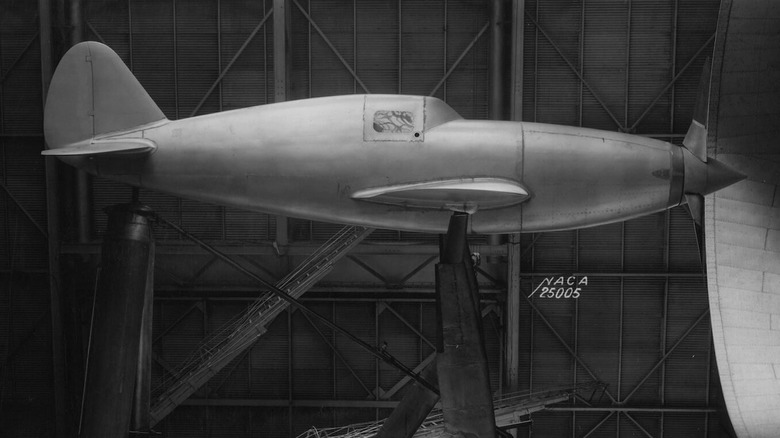 Wikimedia Commons
Wikimedia Commons
During World War II, the nation's automakers were called upon to help with its war effort. So, when the Army Air Corps expressed interest in having Chrysler develop an engine for a high-speed pursuit aircraft, followed by a contract in 1941 for what it called the IV-2220, the company got started. This engine was later identified as the XI-2220, with a goal of producing 2,000 horsepower at the engine's output shaft. The engine needed to have minimal vibration and the lowest possible frontal area.
Chrysler's solution to this problem was a liquid-cooled V16 engine, made up of two inverted V8s with a drive coming from the center of the engines and going to the gearbox in the front of the plane. Each of the V16's cylinders had two valves, a displacement of 139 cubic inches, and hemispherical combustion chambers, making this aero engine Chrysler's first HEMI engine.
The V16's total displacement was around 2,220 cubic inches, while its output, boosted by a GE turbocharger and intercoolers, could reach 2,500 horsepower during takeoff. The Chrysler V16 engine successfully flew after being tested in two different modified XP-47H versions of the tough and capable Republic P-47 Thunderbolt, which had a WW2 legacy all its own.
What happened to the engine?
 Wikimedia Commons
Wikimedia Commons
The first test flight of the XI-2220 in a P-47 happened on July 27, 1945, while its last test took place on October 31, 1945. Even though the XI-2220 had greatly improved aerodynamics and performance compared to the P-47's original radial engine, World War II had ended by the time of the XI-2220's final test flight. This meant that Chrysler's engine was no longer urgently needed. Another nail in the Chrysler V16 HEMI's coffin was the realization that jets, not propeller-driven airplanes, would be the future of aviation, changing warfare forever.
Three examples of the XI-2220 V16 aircraft engine survive to this day. Serial number D-000001 resides at the New England Air Museum in Windsor Locks, Connecticut. Serial number D-000005 is at the Chrysler Foundation in Auburn Hills, Michigan. Finally, Serial number D-000006, including the firewall of the XP-47H it was installed in, is in the collection of the Smithsonian National Air & Space Museum in Chantilly, Virginia.


